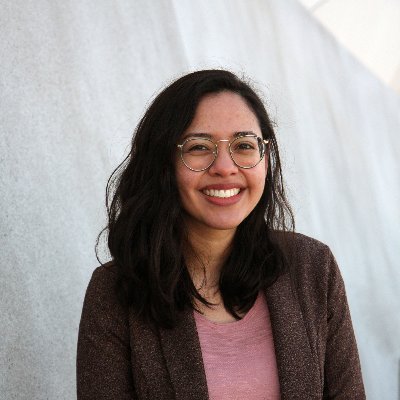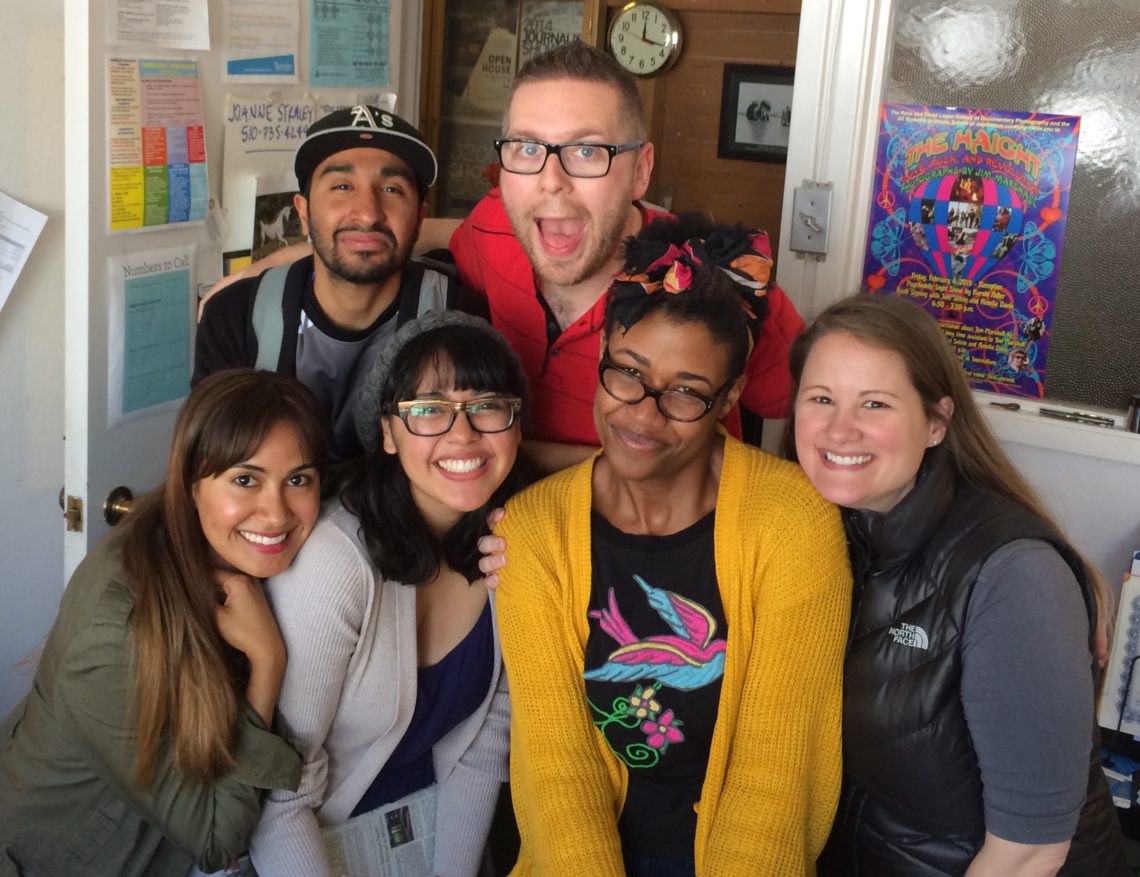
People come to journalism from different academic and professional backgrounds. In the case of Yolanda “Yoli” Martinez (MJ ’15), she always knew she wanted to work in the media. And so, after completing her undergraduate degree in English, she took an internship and a subsequent job as a website producer for a PBS television station in Los Angeles. It was then she realized that while she was a good web producer, the journalism jobs she coveted were more hands-on.
“I was interested in criminal justice reporting from day one,” she said, thinking back to her pre-J-School years. “But I realized I needed to get a J-school degree in order to get a foot in the door for any of the journalism jobs.”
In a span of just six years, Martinez has had a whirlwind career, working in different newsrooms and strengthening her skillset. Crucially, through the many shifts and moves — from the Bay Area to Washington, D.C., to New York and back to the Bay Area — she had a clear idea of the profile she wanted to build and the kind of journalism she wanted to do.
Martinez’s association with the J-School has now come full circle. This spring, she is co-teaching the Introduction to Coding course with Soo Oh.
When she first applied to the J-school, Martinez knew exactly what she wanted to do, and the skills that she hoped to pick up over the course of her graduate studies. She did not see herself making a career writing or producing documentaries, but was keen on pursuing the multimedia track. “I really wanted to learn coding and data science,” she said, “because I’m someone who really likes to sit and work on computers all day.”
Some of her fondest memories of the J-school are of doing exactly that in the B1 multimedia room, working on projects under Professors Jeremy Rue and Richard Koci Hernandez and the 10 other students in the multimedia cohort.

Front row, left to right: Sarah McClure, Yoli Martinez, Beatrice Katcher, Lynne Shallcross. Back row, left to right: Juan Martinez, Kevin Hume
“In the second year it gets really stressful, so we ended up working together, having meltdowns together,” she said. “But it was fun stress.”
Particularly challenging was her master’s thesis, which dealt with police violence. Against the background of the murder of 14 year old Tamir Rice at the hands of a Cleveland police officer in 2014, Martinez recalls a push to mandate bodycams for all officers at the time.
“But everytime any police shooting footage was released, there was a lot of talk about how it doesn’t provide enough context and that it presents just one side of the story,” she said. “So we thought, let’s create a multi-point-of-view project, wherein we speak to police officers, victims, their families and so on, to get a more well-rounded perspective.”
Though the project sounded straightforward, Martinez and her partner soon were laboring through hundreds of hours of police bodycam footage to put together a sort of database, and then tracking down the relevant people to comment on it, on camera. Unsurprisingly, the most difficult task was getting police officers to speak on the record and react to footage of police-perpetrated violence.
In the Bay Area, only retired police officers would speak with them, so Martinez and her partner travelled to New York City to interview on-duty police detectives. Interestingly, though she spent most of her two years learning coding and nifty data visualization, Martinez found video to be the best medium for her master’s thesis project.
According to Rue, Martinez’s thesis adviser at the J-School, her willingness to take on different media distinguishes her as a multimedia journalist.
“Yoli is a polymath,” he said. “She’s done audio. She’s done print. She’s done coding. She’s done data. She’s done everything. And I think the richness of having that multidisciplinary expertise of media shapes her understanding. So when she’s working on an interactive web story, she knows all of the obstacles and challenges of the different media forms in order to help create a narrative.”

Left to right: Alexandra Garretón, Yoli Martinez, Beatrice Katcher, Lynne Shallcross, Guisel Contreras, Nancy DeVille
While Martinez is grateful for having had hands-on experience with different media, she believes her most valuable learning experiences were the hours of downtime she spent writing and improving programming scripts. These hours have paid dividends since her graduation, and she has carved a niche as a web producer and data journalist.
For instance, her first job as digital producer at the Pew Research Center in Washington, D.C., was not a traditional journalism role, but she was able to build on her coding skills and become proficient in data visualization. It helped that the organization — one of the country’s leading think tanks — strove for objectivity and clear, concise communication, much like journalism.
Next, her interest in crime reporting led her to the Marshall Project, where she worked as a graphics producer. There, she had the opportunity to work on complex data-driven stories about the United States’ criminal justice system and found her feet as a journalist.
“As journalists, you end up in places where people like doing shiny, cool new things without thinking about why they’re doing it. And the people I worked with at the Marshall Project were just some of the most thoughtful people I’ve ever had the privilege to work with,” she said. “I learned how to be a person in the newsroom, how to defend myself and speak up, knowing that I was surrounded by people who are thoughtful about the journalism they are creating.”
After the Marshall Project, Martinez did a stint at The Wall Street Journal before taking a job as a newsroom developer at the San Francisco Chronicle. There, she created interactive data visualization tools for a variety of stories, not only for the Chronicle, but also for sister publications such as the Houston Chronicle and the San Antonio Express-News.
Her most recent project was an interactive tool she developed for the San Francisco Chronicle, in which California residents can track the demographic changes that have taken place in their neighborhoods from 2010 to 2020.
After a year and a half at the Chronicle, Martinez started a new job in December at The Washington Post, as a full stack engineer. Her role is that of a bridge between the engineering team working on the backend of the WaPo website and the newsroom.
“My focus is going to be front-end development, which involves a lot of visualizations,” she said. “For sure, it’s exciting!”
Drawing on her experiences in different newsrooms, she hopes to communicate to students that “technical skills are not intimidating and that in order to grow in the industry, having a basic understanding of how a web page comes together is essential, regardless of the field they choose to pursue.”
“There’s so much happening and there’s so many courses you could take,” she said to current and prospective J-Schoolers. “But if there’s a certain skillset you want to live with, focus on that and make your classes work for you.”
As for Rue, he is happy seeing a J-School protege take over teaching duties for this class. “I would be proud to see her do something extraordinary with the class, and show me up,” he said.
Tanay Gokhale (‘23)
